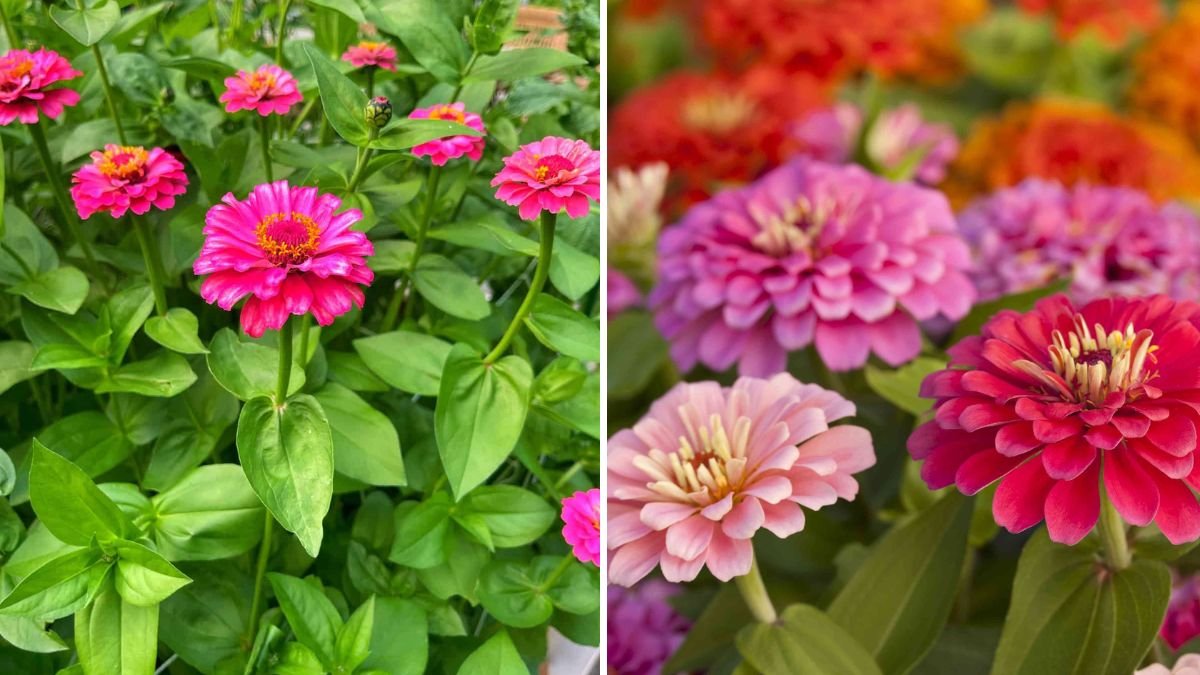Zinnias are among the most beloved garden flowers, celebrated for their vibrant, long-lasting blooms and ability to attract pollinators such as butterflies and bees. These cheerful annuals are relatively easy to grow, but their success—especially keeping them upright and healthy—depends largely on the soil they grow in. Providing a soil mix that supports strong stems, abundant flowers, and overall plant health is essential for achieving a flourishing zinnia garden. This guide explores the ideal soil conditions, nutrient requirements, and preparation techniques to ensure your zinnias grow tall, robust, and bloom abundantly.
Understanding Zinnias and Their Soil Needs
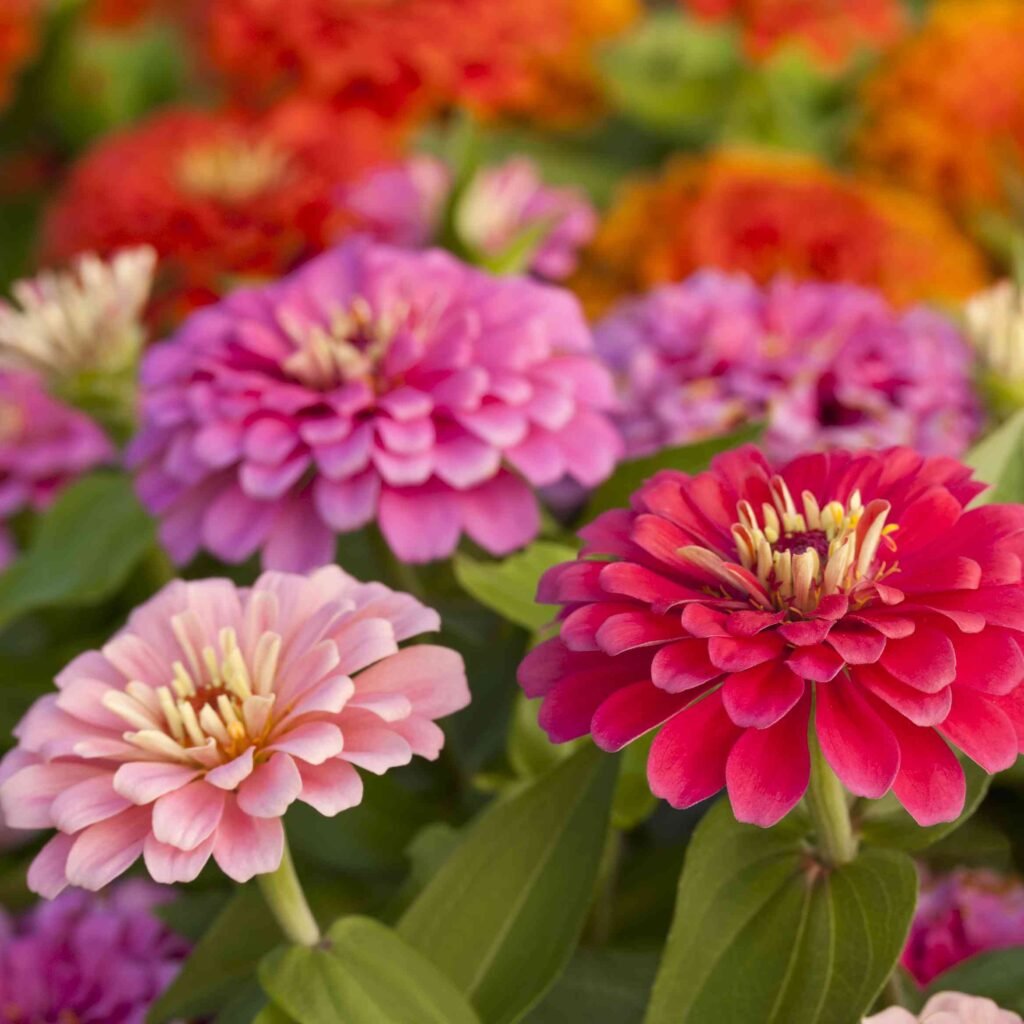
Zinnias are hardy, sun-loving plants native to Mexico. While they tolerate a variety of soil types, optimal growth requires:
- Well-draining soil: Prevents root rot and allows roots to access oxygen.
- Moderate fertility: Supports vibrant blooms without promoting weak, spindly growth.
- Balanced pH: Slightly acidic to neutral soil (pH 6.0–7.5) is ideal.
- Aeration: Loose soil allows roots to grow deep, supporting strong stems.
The right soil mix is crucial because zinnias with weak roots or nutrient imbalances often topple over or produce fewer flowers. Gardeners who master soil preparation see healthier plants that stand tall and bloom profusely.
Components of the Best Soil Mix for Zinnias
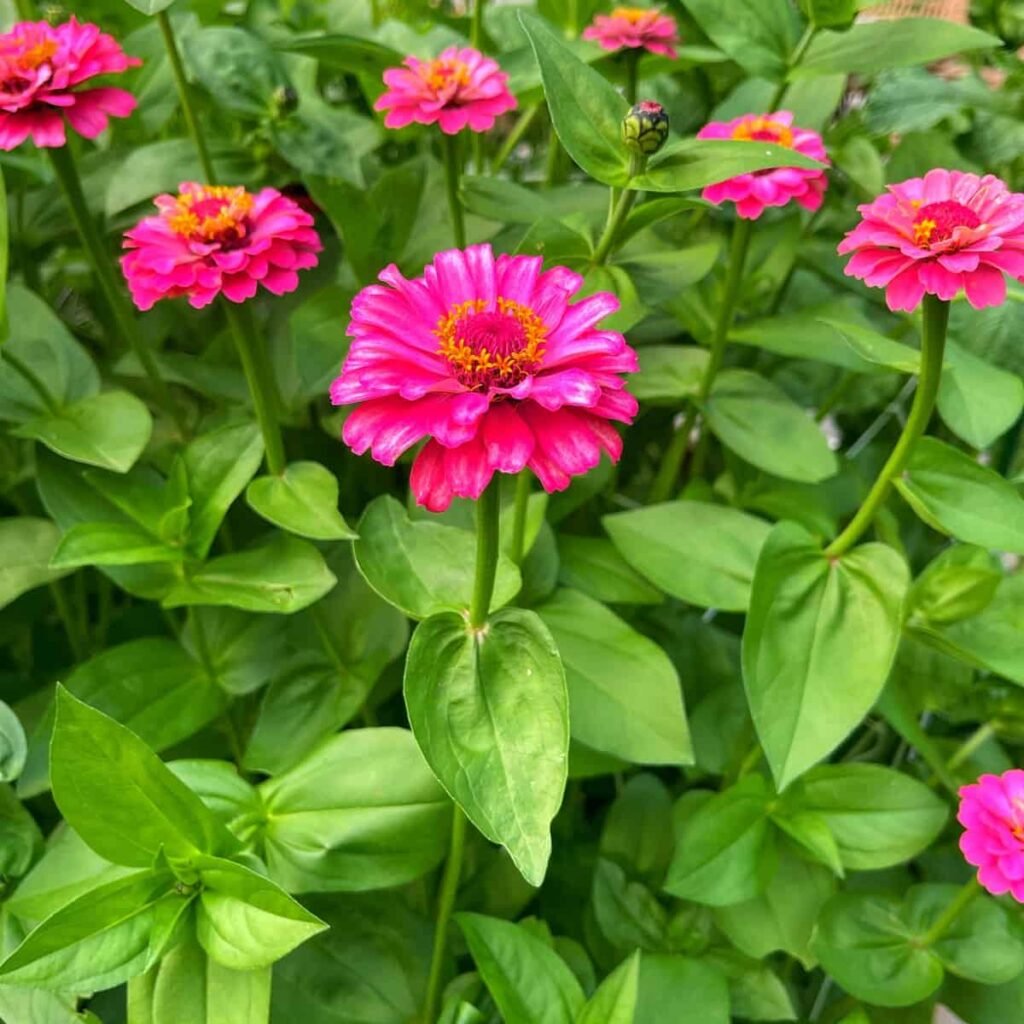
Creating the perfect soil mix involves combining several key components that provide drainage, nutrients, and structure. Here are the essentials:
1. Loamy Soil
- Purpose: Provides structure, retains moisture, and allows root expansion.
- Composition: A balanced mixture of sand, silt, and clay.
- Tip: Use high-quality garden loam as the base of your soil mix for zinnias.
2. Organic Matter
- Purpose: Supplies nutrients, improves soil texture, and enhances moisture retention.
- Types: Compost, well-rotted manure, or leaf mold.
- Application: Mix 25–30% organic matter into the soil to enrich fertility without overloading nitrogen, which can cause tall, weak stems.
3. Sand or Perlite
- Purpose: Enhances drainage and prevents soil compaction.
- Tip: Add 10–15% coarse sand or perlite to improve aeration and reduce the risk of root rot.
4. Slow-Release Fertilizer
- Purpose: Provides steady nutrients throughout the growing season.
- Recommendation: Incorporate a balanced fertilizer with equal parts nitrogen, phosphorus, and potassium (N-P-K 10-10-10) at planting time.
- Caution: Avoid excessive nitrogen, which can result in lush foliage but weak, floppy stems.
5. Optional Soil Amendments
- Lime or Sulfur: Adjust soil pH if needed.
- Bone Meal: Supplies phosphorus for strong root and flower development.
- Humic Acid or Worm Castings: Improves nutrient absorption and overall plant vigor.
By combining these components, gardeners can create a nutrient-rich, well-draining, and aerated soil mix that supports tall, healthy zinnias.
Step-by-Step Guide to Preparing Soil for Zinnias
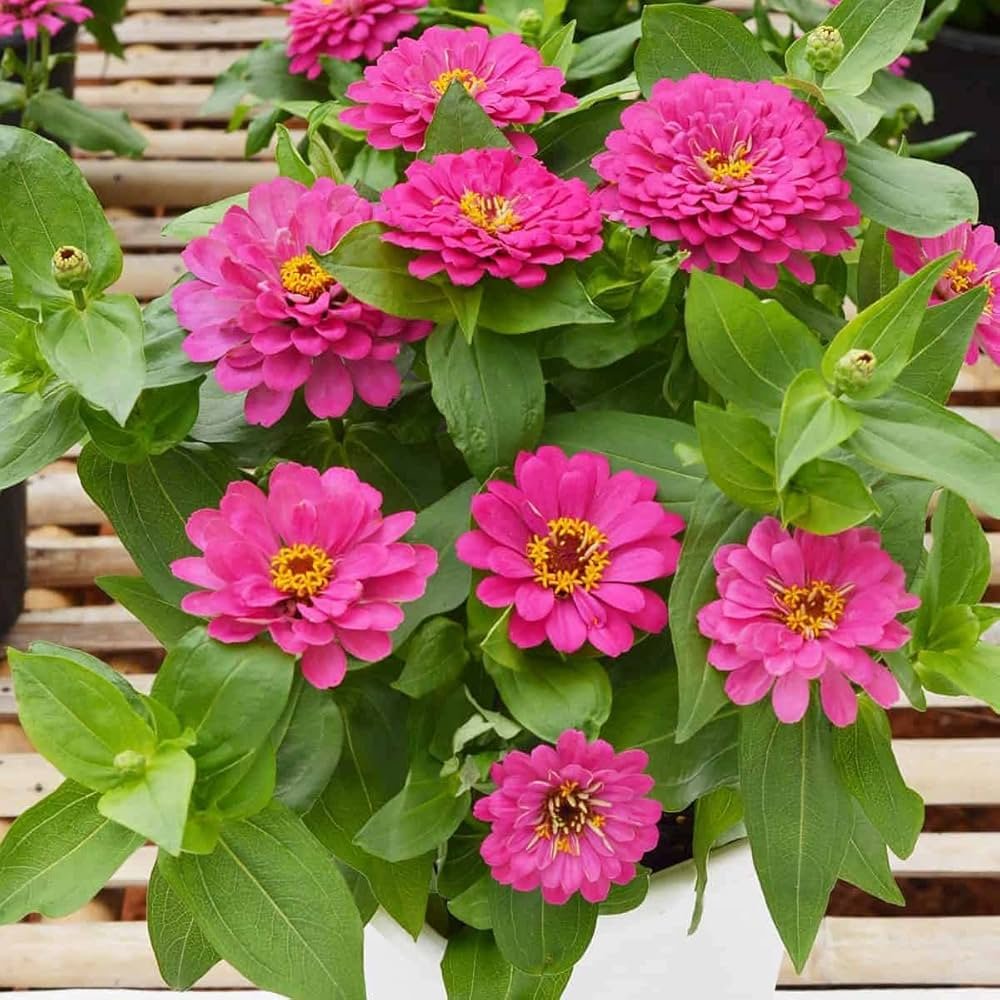
- Test the soil pH: Use a soil test kit to ensure the pH is between 6.0 and 7.5. Adjust with lime (to raise pH) or sulfur (to lower pH) if necessary.
- Loosen the soil: Till or dig the planting area to a depth of 8–10 inches to improve aeration.
- Incorporate organic matter: Mix in compost or well-rotted manure thoroughly.
- Add sand or perlite: Ensure even distribution for improved drainage.
- Blend in fertilizer: Use a slow-release balanced fertilizer to provide nutrients throughout the growing season.
- Level the soil: Rake the soil surface to create an even planting bed that promotes uniform root development.
Container Zinnias: Soil Mix Tips
Zinnias also thrive in containers, but container-grown plants need extra attention to soil composition.
Ideal Container Mix:
- 50% high-quality potting soil
- 25% compost or worm castings
- 15% perlite or coarse sand
- 10% slow-release granular fertilizer
Container tips:
- Use pots with drainage holes to prevent waterlogging.
- Avoid heavy garden soil alone, which can compact and suffocate roots.
- Water regularly but allow the top inch of soil to dry between watering to prevent root rot.
Watering and Soil Maintenance
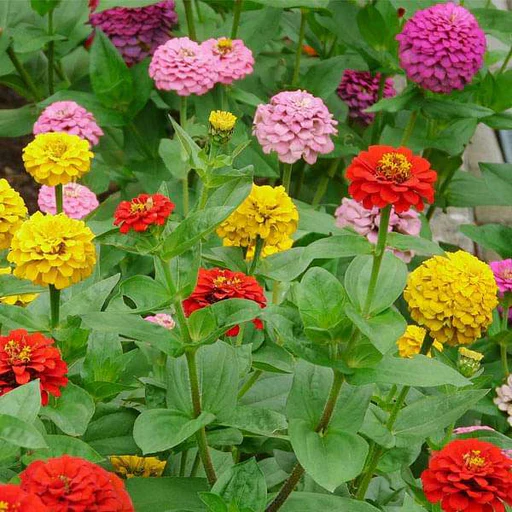
Even the best soil mix requires proper watering and care:
- Consistent Moisture: Keep soil evenly moist, especially during germination and flowering.
- Avoid Overwatering: Waterlogged soil can lead to root rot and weak stems.
- Mulching: Apply 1–2 inches of organic mulch around zinnias to retain moisture, regulate soil temperature, and reduce weeds.
- Periodic Fertilization: Side-dress with liquid fertilizer every 3–4 weeks to encourage continuous flowering.
Maintaining ideal moisture levels in well-prepared soil ensures zinnias grow upright and strong.
Preventing Floppy Zinnias
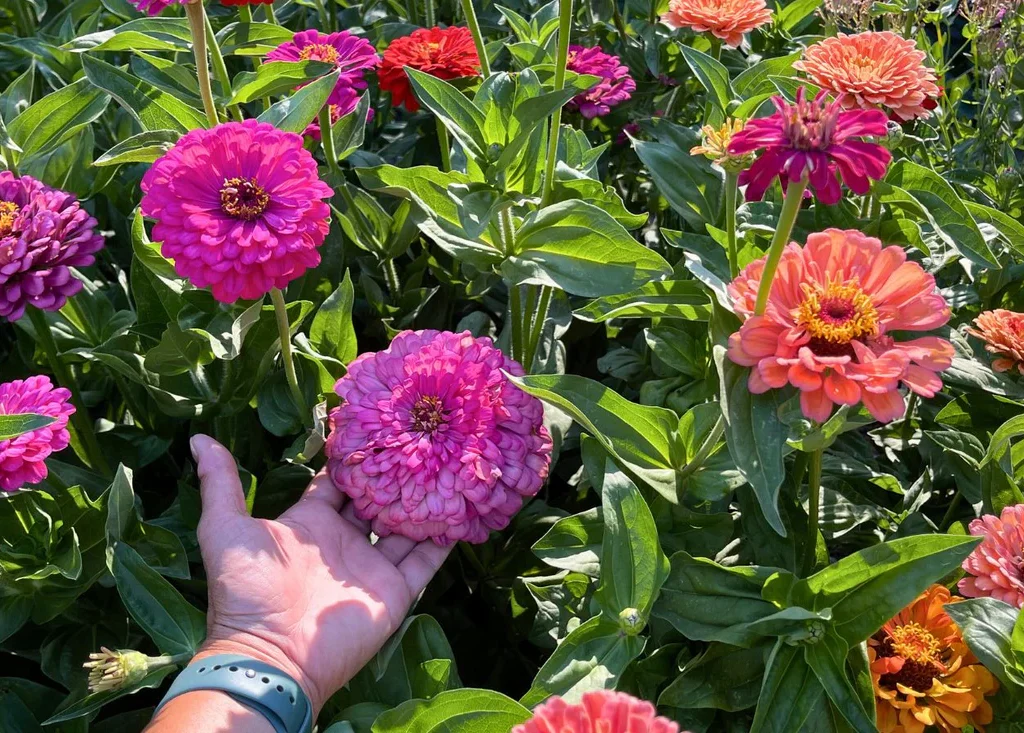
Even with the best soil, some zinnias may lean or topple due to environmental factors. Follow these expert tips:
- Choose the right variety: Tall zinnia cultivars may require staking, while dwarf varieties naturally remain upright.
- Proper spacing: Plant zinnias 6–12 inches apart to reduce competition and encourage strong stems.
- Support stakes: For tall varieties, place stakes early in the growing season to avoid disturbing roots later.
- Avoid excessive nitrogen: Too much nitrogen encourages leafy growth with weak stems.
- Sunlight: Full sun (6–8 hours/day) strengthens stems and promotes upright growth.
By combining strong soil with proper plant care, gardeners can prevent common issues such as floppy stems or uneven growth.
Benefits of Optimized Soil for Zinnias
- Tall, sturdy stems: Proper soil supports upright growth and reduces the need for staking.
- Abundant blooms: Well-nourished plants produce more flowers over a longer period.
- Healthy root systems: Aerated, nutrient-rich soil encourages deep, strong roots.
- Disease resistance: Well-draining soil reduces the risk of root rot and fungal infections.
- Vibrant foliage: Balanced nutrients support lush, green leaves that complement colorful blooms.
Investing time in creating the perfect soil mix pays off with stronger plants, more flowers, and a longer blooming season.
Expert Tips for Long-Lasting Zinnias
- Rotate crops annually: Avoid planting zinnias in the same soil every year to prevent nutrient depletion and disease buildup.
- Deadhead regularly: Remove spent blooms to encourage continuous flowering and reduce energy loss.
- Watch for pests: Healthy soil makes plants more resilient to aphids, spider mites, and fungal diseases.
- Feed during bloom season: A light liquid fertilizer every 2–3 weeks enhances flowering without weakening stems.
- Adjust soil amendments: Add compost or organic matter mid-season if plants show signs of nutrient deficiency.
Following these practices alongside a proper soil mix ensures your zinnias remain tall, vibrant, and full of life throughout the growing season.
Conclusion
The secret to tall, strong, and flower-filled zinnias lies in the soil beneath them. A well-draining, nutrient-rich soil mix with balanced pH, organic matter, and proper aeration creates the ideal environment for root development, strong stems, and abundant blooms. By preparing the soil thoughtfully, providing consistent moisture, and supporting plants through fertilization and staking if needed, gardeners can enjoy vibrant, upright zinnias all season long.
Whether planting in garden beds or containers, understanding and optimizing soil composition is key to healthy, resilient zinnias that not only brighten landscapes but also attract pollinators and bring lasting joy to any garden. With careful attention to soil preparation and ongoing care, your zinnias will stand tall, bloom beautifully, and reward your gardening efforts season after season.
